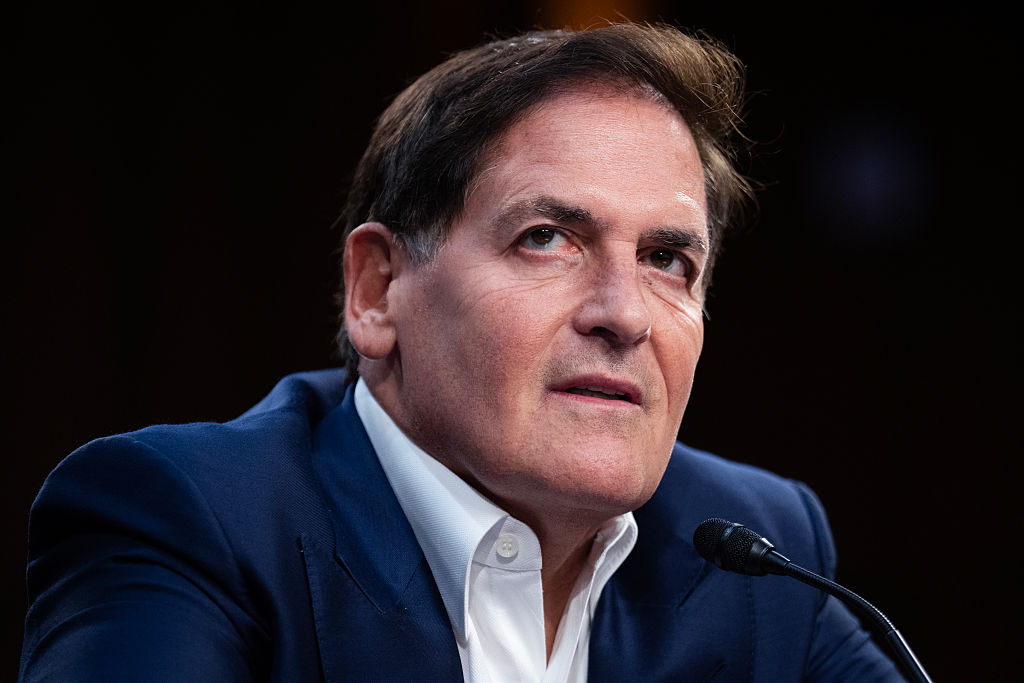Alternative Investments Can Help Combat Slow Growth
In times of low bond yields and interest rates and high stock market volatility, it could pay to look beyond the usual stock/bond mix. Three alternative options: senior-secured loans, real estate and private equity.


In this post-financial-crisis era, a lot of investors have faced slowing growth.
The GDP is down. Europe is slowing. China is slowing. It seems as if everybody is slowing.
We’ve had really low bond yields and low interest rates at the banks. We’ve had increased volatility in the market. And people are just getting used to it. It’s become the new normal.
From just $107.88 $24.99 for Kiplinger Personal Finance
Be a smarter, better informed investor.

Sign up for Kiplinger’s Free Newsletters
Profit and prosper with the best of expert advice on investing, taxes, retirement, personal finance and more - straight to your e-mail.
Profit and prosper with the best of expert advice - straight to your e-mail.
Now, obviously, we’ve seen some changes since President Trump was elected, but that doesn’t mean things have been fixed all of a sudden. We need to be mindful that the market has been very good lately, but it also can turn around quickly.
Investors still face what the NATIXIS 2015 Global Survey of Individual Investors refers to as “a significant planning gap” that could leave investors “without the solid footing needed to reconcile their desire for investment returns and their lingering aversion to taking risk.”
The survey found that 69% of investors no longer believe a conventional stock-and-bond portfolio is enough to generate adequate returns and preserve capital. That’s a problem, because those are among the three main goals of people in pre-retirement and retirement:
- To have growth;
- To be able to pull income from what they’ve saved; and
- To be able to diversify in a way that is prudent for their retirement.
‘Grow My Money, But Don’t Lose It’
This reminds me of something my father told me. I’ve been working with his investments for years, and he’s said from the start: “I want you to grow my money. I want you to get me some income from it. And don’t lose it. Don’t lose my money.”
I hear some version of that little speech from most people who are nearing or in retirement. The problem is, when everything is slow, low or risky, how do you grow your money even a little bit? Where’s it going to come from?
Traditionally, that’s the role the stock market plays; it’s been the cornerstone of every investor’s portfolio. Many advisers, and most of the big firms, still will tell you to diversify across the markets for the long term and you should be fine. But global growth rates have declined over the past two years, and there are very few signs to suggest this trend is going to reverse in the near term.
Another challenge is that, because of those lower yields, a retiree’s ability to pull income from investments has been hindered. The rule of thumb for how much you should withdraw from retirement accounts each year used to be 4%. The “4% rule” was created in the early ’90s, though — more than 20 years ago. It’s been suggested that now it should be the “2.8% rule,” because bond yields have sunk so low.
Diversification is the third goal for your retirement portfolio, but since the 2008 crisis, we’ve seen a higher correlation between stocks and bonds because of the way they’re traded. People don’t realize that bond funds trade on the open market just as stocks do. They say, “Wait, I own bonds; why are they going down like this?” It’s because there is an increased correlation to the downturns in the market.
A Different Type of Portfolio
So, how can you work to help counteract the market malaise?
It’s time to look beyond the usual stock-bond portfolio. Some alternative investments I think can be good for some retirees include:
- Senior-secured loans or senior-secured debt. These are extensions of credit made to non-investment-grade corporations for acquisitions, growth or other business purposes. They are secured by a company’s assets. If the company fails, investors are the first to be repaid, which makes them less risky than high-yield bonds or other investments that offer some growth. There are many different ways investors can invest, publicly and privately. Of course, if done by owning publicly traded companies that provide senior secured loans to businesses, the investor essentially takes on the stock market risk associated with that particular company making those loans. Another option would be for the investor to own a similar company that is private. This reduces the stock market correlation and downside but also limits the investor's liquidity because it is not able to be sold immediately on an exchange. However, most of these private companies have exit strategies to provide liquidity, whether that is do an IPO or merge with another company that may offer advantages to the shareholder.
- Real estate. Not all real estate is created equal. There’s good real estate, and there’s real estate I wouldn’t touch. Focus on necessity-based private real estate, such as a health care site or grocery chain. Owning real estate directly is always an option, but that creates a number of challenges for investors, such as liquidity, overexposure in just a couple properties in one market area and the headaches associated with taxes, tenants and toilets. I prefer owning private companies that own a sector-specific real estate that is diversified across the U.S. and is necessity based. Of course there are public versions of these companies as well as private. As with senior secured debt, there are pros and cons with each.
- Private equity. High-net-worth individuals might wish to look at purchasing a private company with growth in mind. Because a private company’s actions are dictated by management, not shareholders, there’s more control. We’ve seen a lot of endowments and pension funds doing this; it’s what we mean when we say “big smart money.” I typically prefer a diversified portfolio of private businesses that focus on multiple sectors as opposed to one company. The idea is to gain access to private ownership of businesses that are already income producing rather than those In the early stages (i.e., angel investors and venture capital). Mature companies that are private (as opposed to publicly traded as referenced above) can provide income to the investor, but again there is still a liquidity risk.
Don’t Go Crazy
Of course, every investment has a pro, a con and a string attached. The pro for these kinds of alternative investments is that you’re likely to see better yields than you would with traditional bonds. The downfall is liquidity. You can’t just go sell these investments on the open market. The turnaround can take time. So you want to be mindful of how much you have invested — typically, for most individuals, no more than 20% to 35% of a portfolio.
And this isn’t to say that you shouldn’t have your money in the markets. You just want it to be an appropriate amount. Stick to the prudent investor rule: 100 minus your age. If you’re 60 years old, you should have 40% of your money in that stock-bond approach because of liquidity.
But I always say that Warren Buffett isn’t sitting in his bathrobe day-trading on his laptop; he’s likely including alternative investments that don’t trade on the open market into his overall investment holdings. And that’s what you could be doing, too, instead of just sticking your money in the markets and crossing your fingers.
Kim Franke-Folstad contributed to this article.
The article and opinions in this publication are for general information only and are not intended to provide specific advice or recommendations for any individual. We suggest that you consult your accountant, tax, or legal advisor with regard to your individual situation. Alternative Investment Funds represent speculative investments and involve a high degree of risk. An investor could lose all or a substantial portion of his/her investment. Investors must have the financial ability, sophistication/experience and willingness to bear the risks of an investment in an Alternative Investment Fund. Any investment in Alternative Investment Funds should be discretionary capital set aside strictly for speculative purposes. Alternative Investment Fund offering documents are not reviewed or approved by federal or state regulators. Some Alternative Investment Funds may have little or no operating history or performance and may use hypothetical or pro forma performance which may not reflect actual trading done by the manager or advisor and should be reviewed carefully. Investors should not place undue reliance on hypothetical or pro forma performance.
Profit and prosper with the best of Kiplinger's advice on investing, taxes, retirement, personal finance and much more. Delivered daily. Enter your email in the box and click Sign Me Up.

Curvin E. Miller IV is vice president of Russell & Company Total Wealth Management. He is a Chartered Retirement Planning Counselor designee through the College of Financial Planning, has passed the Series 7 and 66 exams and is a licensed insurance professional. He was named one of the Top 18 Alumni from 2004 to 2013 by his alma mater, Miami University in Ohio. Miller co-hosts the weekly "Retirement Rescue Radio" show. He is a longtime swimmer and loves mountain biking.
-
 Dow Trims Its Loss to 498 Points: Stock Market Today
Dow Trims Its Loss to 498 Points: Stock Market TodayMarkets are wondering more and more about returns on the enormous amounts of capital hyperscalers are investing in AI.
-
 5 Mark Cuban Quotes Every Retiree Should Live By
5 Mark Cuban Quotes Every Retiree Should Live ByThe billionaire businessman and Shark Tank alum has some advice that may surprise you.
-
 I'm a Financial Planner: To Beat Inflation and Build Wealth, This Is the Strategy You Need
I'm a Financial Planner: To Beat Inflation and Build Wealth, This Is the Strategy You NeedIf you want to build long-term wealth, there's a tried-and-trusted strategy, and it starts with recognizing the inflation-busting power of equities.
-
 I'm the CEO of a Credit Union: This Is What We Do to Earn Our Members' Trust
I'm the CEO of a Credit Union: This Is What We Do to Earn Our Members' TrustWhat people want most from their financial institutions is a financial partner that listens, responds and acts with their best interests at heart.
-
 Sharpening Your Focus: 'Hone' Authors on How Leaders Can Keep Their Businesses on Track
Sharpening Your Focus: 'Hone' Authors on How Leaders Can Keep Their Businesses on TrackBusiness owners like this chef could learn valuable lessons from 'Hone,' including how caving in to pressure to quickly expand could lead to business 'drift.'
-
 Your Four-Step Guide to True Financial Freedom, From a Financial Planner
Your Four-Step Guide to True Financial Freedom, From a Financial PlannerYes, you can achieve financial independence, even if it seems elusive. While it may not be an easy journey, these are the steps to get things rolling.
-
 The Private Annuity Sale: A Smart Way to Reduce Your Estate Taxes
The Private Annuity Sale: A Smart Way to Reduce Your Estate TaxesIn a private annuity sale, you transfer a highly appreciated asset to an irrevocable trust in exchange for a lifetime annuity.
-
 I'm a Real Estate Investing Pro: This High-Performance Investment Vehicle Can Move Your Wealth Up a Gear
I'm a Real Estate Investing Pro: This High-Performance Investment Vehicle Can Move Your Wealth Up a GearLeave online real estate investing to the beginners. Accredited investors who want real growth need the wealth-building potential of Delaware statutory trusts.
-
 These Eight Tips From a Retirement Expert Can Help to Make Your Money Last Through Retirement
These Eight Tips From a Retirement Expert Can Help to Make Your Money Last Through RetirementAre you worried you will outlive your money? Considering these eight tips could go a long way toward ensuring your retirement money lasts as long as you do.
-
 I'm an Investment Adviser: This Is the Retirement Phase Nobody Talks About
I'm an Investment Adviser: This Is the Retirement Phase Nobody Talks AboutWhat you do in the five years before retirement and the first 10 afterward can establish how comfortable you'll be for the rest of your life.